Full Guide To Purple Fluorite vs. Amethyst (This Is The Difference)
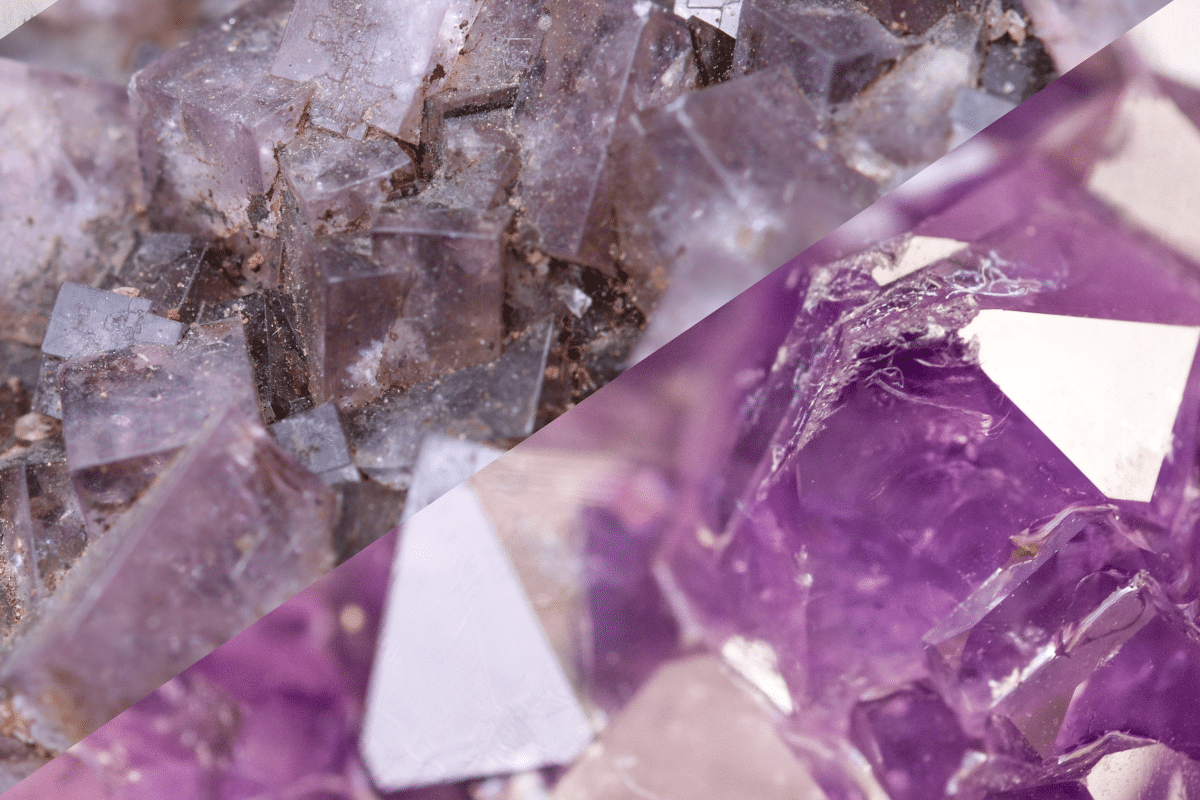
In order to work with our crystals effectively, we need to understand their properties. With crystals that look similar or have similar uses, such as purple fluorite and amethyst, it can be difficult to determine which one to work with. The answer should always be; the one that you are drawn to the most. However, if you are looking to find the difference in physical appearance as well as metaphysical properties, you’ll find your answer here.
Purple fluorite often has banding and might include other colors, whereas amethyst is likely one color. The latter is also more opaque and harder. Raw fluorite has right angles, while amethyst has hexagonal points. Both are used to stimulate and balance the third eye chakra.
Continue reading if you want to know more about the (physical) qualities of these stones, as well as how you can use them in your spiritual practice.
Also read: Can Fluorite Go In Salt? (Purple, Blue, Green, Yellow, Clear And Others)
Want more help or information? If you have any more questions after reading this blog post or want a personal answer for your specific situation, join the free Facebook group! We promise you’ll get an answer from either our team members or a community member.
Purple Fluorite vs Amethyst – How To Tell The Difference?
In order to understand the difference between these two stones, we can look at the color, shape, pattern, clarity, and more. Below we’ll describe all these aspects in detail.
Color
Fluorite is generally colorless but is also available in a wide variety of shades, owing to the impurities in the stone. The colors include purple, green, lilac, brown, golden yellow, and pink. Fluorite is often banded and multicolored. If you have a black light, this is an easy way to determine if your stone is fluorite, as it glows under such a light. Amethyst does not.


Amethyst is most commonly purple but can also be pink. The color hues may be deep to a lilac shade depending on the amount and concentration of the trace elements.
The best quality of amethyst is dark purple, with no color zoning visible on the stone. This means the color of the stone is consistent throughout. However, some stones will show brown hues, which lowers their value significantly.
Also read: Can Fluorite Be In The Sun? (Blue, Green, Purple and More)
Pattern, Clarity and Shape
Purple fluorite is transparent to translucent in clarity and has a glass-like shine. Most often, the stone has one color, but there are varieties of fluorite that have banding and multiple colors. When ground up, the dust of fluorite is white.
Amethyst is translucent to transparent, depending on the amount and size of the inclusions, and also has a glassy luster. This transparency is one of the easiest ways to determine if you’re holding an amethyst or fluorite. Hold the stone up to the light and check if it is more opaque, or if you can see through it quite easily. If you can, it is likely fluorite. Amethyst has the tendency to have a more intense color, after all.
Keep in mind that his only works for raw crystals.

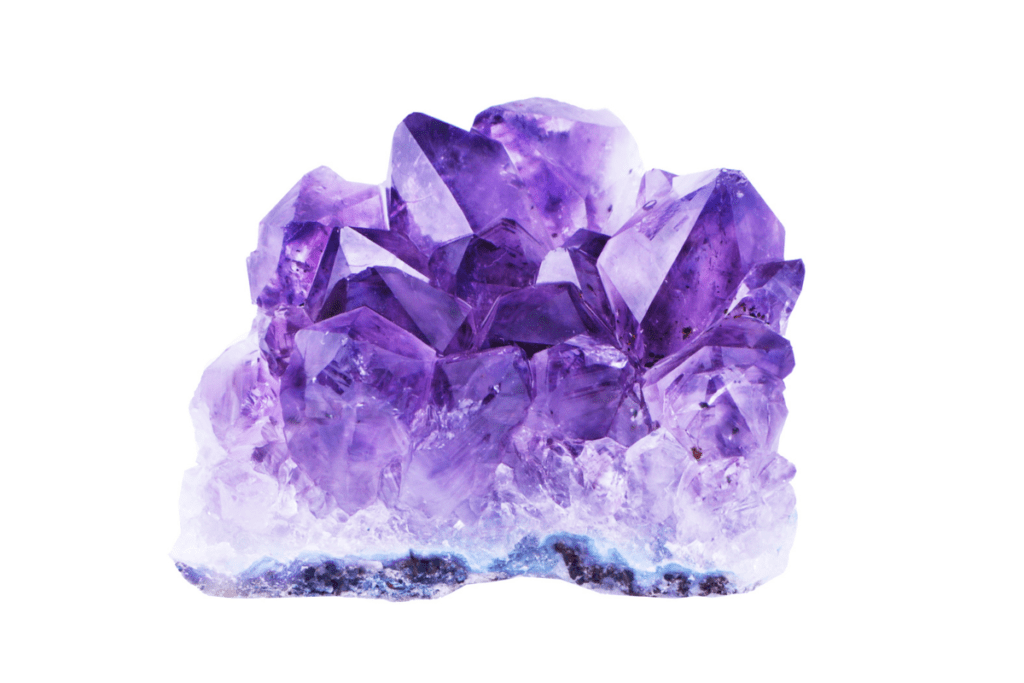
With the raw version of these crystals, you can also look at the shape. ve a look at whether it has mostly right angles or points shaped liked hexagons. If the stone mostly has right angles, it is likely fluorite. If it has points shaped like hexagons, it is probably amethyst. You can see an example of this in the picture above.
With polished versions of these stones, the best thing to do is to check if there’s a pattern. Fluorite often has banding of other colors, like green. Amethyst is only one color, unless it is chevron amethyst. This variety has white banding.
Hardness
One significant difference between the two stones is that amethyst is harder than purple fluorite. Purple fluorite is a soft stone, rating 4, while amethyst rates 7 on the Mohs scale.
If you’re unfamiliar, the Mohs scale of hardness determines a stone’s hardness by measuring how scratch-resistant it is. According to this scale, a stone can scratch any other mineral with a lower score. For reference, talc is a 1, whereas diamond is a 10.
So, in our example, amethyst would be able to scratch fluorite. This scratching is one of the best ways to determine which stone you have.
Grab a knife from the kitchen – these have a hardness of about 5,5-6 – to scratch the stone. Make sure you’re wearing gloves or some form of protection so you cannot hurt yourself. If it leaves a mark, your stone is likely fluorite. If it doesn’t, it’s probably amethyst.
Chemical Composition
Fluorite is formed when fluorine-rich water is heated and travels upward through the earth. On the surface, it mixes with limestone, which is calcium-rich. When the water evaporates, fluorite is created.
Pure fluorite does not contain any metals and is, therefore, clear. However, fluorite occurs in all colors, which is the result of zinc, copper, silver, or lead inclusions as well as exposure to radiation, like sunlight.
On the other hand, amethyst belongs to the quartz family, and consists of silicon dioxide. The stone may also contain traces of other minerals within its composition, such as iron and aluminum, which cause the purple color.
They are formed when liquid rich in silica flows into cavities caused, most commonly, by lava. When the lava cools, gas bubbles are trapped, causing the open spaces and allowing the liquid to settle there. Depending on the other minerals present in the liquid, it forms a different type of quartz.
Care
If you want to clean your stones, we recommend using a soft cloth to remove any dust. Amethyst is hard enough to be able to withstand water, so feel free to use a damp cloth on this stone. We do not recommend leaving it in water, as this will eventually cause any stone dull.
On the other hand, fluorite is relatively soft and will turn brittle and potentially even break when exposed to water.
We recommend avoiding acid treatments, the use of mechanical cleaning systems, abrupt temperature changes, and prolonged exposure to light for either of these stones. Even amethyst, although fairly stable, can lose its color or turn brittle as a result of these treatments.
When you are using these stones for their metaphysical properties, we recommend cleansing and recharging them regularly, at least once a month. This allows the stone to remove any negative energies that are trapped and refill with positive ones.
Cleansing can be done using sound, cleansing crystals like clear quartz and selenite, or by smoke cleansing. Recharging can be done, again, by using sound, but also by leaving these stones in the moonlight overnight or burying them in the ground or brown rice.
To cleanse and recharge your amethyst, fluorite, or any other stone, using sound, you can use the video below. Just let the sound fill the room and set an intention for them. This would also be a good time to sit with your crystals to meditate. Make sure to keep your energy light – we want them to recharge, after all.
Also read: Can Fluorite Go In Water? (Full Guide)
Location
Purple fluorite can be found in England, Germany, Peru, Mexico, and Brazil. Amethyst is found all over the world, although the largest global producer of this stone is Zambia. Amethyst geodes are found mainly in Brazil. Other areas where this stone can be found include Russia and India.
(Meta)physical Healing Properties
Beware that crystals are never a replacement for professional medical help. If you have any issues, see a doctor first and follow their advice.
Purple fluorite is used to improve mental clarity, health, and purity. The stone also helps flush toxins from the body. Purple fluorite is also used to cure bone and joint-related problems and restore mobility. The stone is also helpful in mental and emotional well-being, such as the elimination of negative thought patterns, behaviors, and addictions.
This stone will help you find yourself and go with the flow. Along with that it also brings clarity of mind which is vital for better decision-making. It also keeps you grounded and safe with your life’s decisions, as well as improves your creative spark. The purple stone is all about positive vibes, hence a good aura cleanser and great for balancing and aligning the body chakras.
Amethyst is used to protect you from psychic attacks and any other type of harm, including electromagnetic pollution.
The stone is a natural remedy for fear, stress, anxiety, irritability, mood swings, and any type of strain. The stone also eliminates negative energies and helps with anger and grief. The stone brings peace, and motivation and improves memory and focus; after all, this stone is also called a ‘natural tranquilizer’.
For the physical body, the stone is used for hormonal, metabolism, respiratory, and endocrine system-related illnesses.
Also read: Purple Agate vs Amethyst – This Is The Difference
Chakra Association
Purple fluorite and amethyst are used for the third eye and crown chakra for mind stimulation, awareness, and communication with the divine.
Chakras are the different energy points in our bodies. There are 7, each of them linked to a certain aspect of our lives. We can link each chakra to crystals or gemstones by color and their properties.
- Root chakra (Muladhara) is represented by black/red and is located at the base of the spine. This chakra is related to stability.
- Sacral Chakra (Svadihsthana/ spleen) is represented by orange and is located below the navel. The sacral chakra is associated with feelings and sensuality.
- Solar Plexus Chakra (Manipura) is represented by yellow and is located above the naval. The solar plexus chakra is related to intellect.
- Heart Chakra (Anahata) is represented by green/pink and is located in the chest area. This chakra is associated with loving and emotional healing.
- Throat Chakra (Vishuddha) Is represented by blue and is located at the end of the throat. This chakra is associated with communication and tangible dialogues.
- Third Eye Chakra (Ajna) Is represented by indigo and is located between the eyebrows. The chakra is related to spiritual understanding.
- Crown Chakra (Sahasrara) is represented by white and is seen as our connection to the divine.
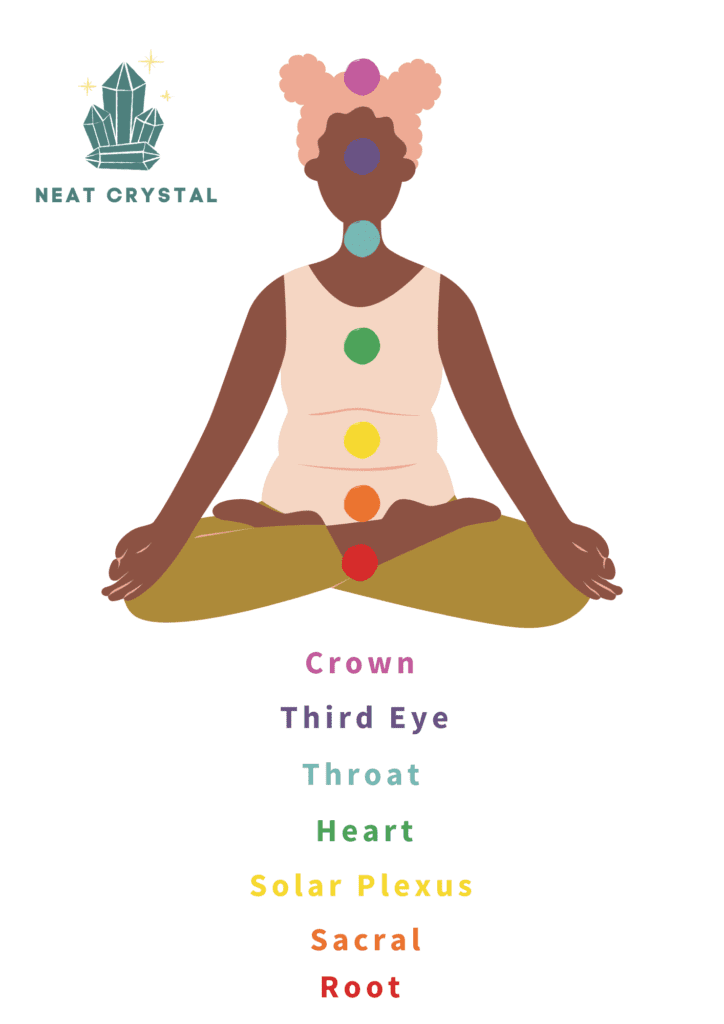
As said, both purple fluorite and amethyst are associated with the third eye and crown chakras, as a result of their purple color. These stones tap into the energies of these chakras to nurture psychic abilities and act as an amulet of protection when worn. The third eye chakra is also involved in knowledge and intuition.
Also read: What Chakra Is Amethyst? (Purple, Ametrine, Pink)
Zodiac Association
Purple fluorite isn’t a traditional birthstone. However, it is particularly useful for the signs of Capricorn and Pisces. Capricorn is a hardworking and structured zodiac sign, but it is very likely for the sign to feel overwhelmed by its thoughts. The fluorite stone comes in to bring order and mental focus. The stone will also fine-tune Capricorn’s organization skills and bring calm to the hyperactive mind.
Pisces, on the other hand, benefits from its healing properties as it has the same ruling planet. The zodiac is a dreamy, emotional, and passionate sign. Purple fluorite will help bring out these qualities without making Pisceans too overwhelmed.
Amethyst is the traditional birthstone for February, associating it with Pisceans born in that month. The stone signifies spiritual wisdom, just like the zodiac sign. Amethyst will boost intuition while protecting the aura.


Also read: The Complete Guide To Amethyst And The Zodiac Signs
Element Association
Purple fluorite and amethyst are both associated with the water element.
Many cultures have developed the idea of elements to explain nature. In the west, this idea was created by the ancient Greeks and consisted of 4 elements: Earth, Air, Fire, Water. In India, another element is added: Akasha, representing the foundation of the other elements.
The 4 elements represent the following:
- Earth for personal growth, stability and security
- Water for love, friendships and emotions
- Air for intellect, wisdom and communication
- Fire for energy, passion and action
By looking at a crystal’s or gemstone’s properties, we can determine which element fits best.
Amethyst and fluorite are related to water, for it’s connection to intuition and psychic abilities. The water element crystals are also commonly used for cleansing and purification practices.
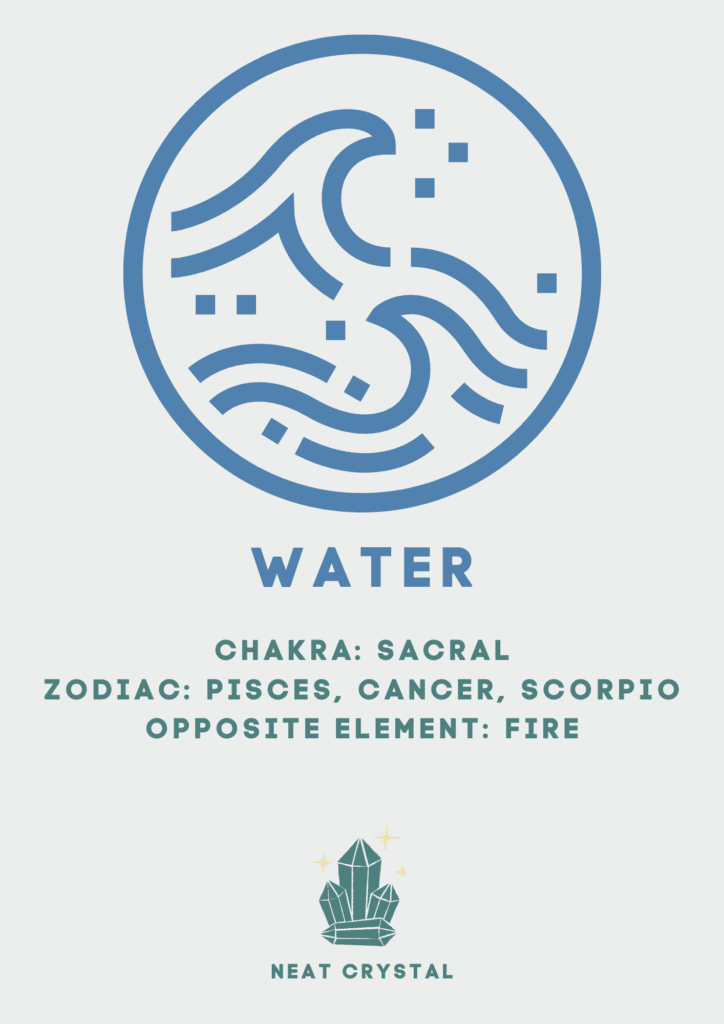
Also read: What Element Is Amethyst? (Purple, Pink, Chevron, Ametrine)
Ruling Planets
Purple fluorite is ruled by Neptune, while amethyst is ruled by Jupiter and Neptune.
Jupiter is a planet of growth, luck, and optimism, while Neptune represents compassion, psychic abilities, and dreams. Jupiter as a ruling planet extends attributes like insight, knowledge, tolerance and expansion. A strong Jupiter will bring wealth, success in business, career and fame.
Neptune, on the other hand, is a subtle ruler. The planet is characterized by mercy, compassion, spirituality, and innocence. A strong Neptune increases your creativity and intuition. It also encourages sacrifice and purity.
Numerical Vibration
Purple fluorite vibrates at the frequency of 5. The number in numerology is used to represent freedom and personal power. People who resonate with the number are curious and fully focused and committed to pursuing their passion. They are also social and connected with their senses. Crystals related to this element can be used to cultivate confidence and attunement to your senses.
Amethyst vibrates at the frequency of 7. This lucky number is used to represent completion, spiritual knowledge, and wisdom. People who resonate with the number are intellectual and solution-oriented. They may also have tendencies to be withdrawn, introverted and impulsive. Crystals like amethyst will help them with their social lives and curb their impulsive nature.
Best Combinations
To get the most out of our work with crystals, it can be incredibly beneficial to pair and combine crystals with similar properties. This way, they can strengthen and enhance each other. Below you’ll find some interesting options.
Purple fluorite can be combined with red aventurine, malachite or red jasper for protection energies. It can also be paired with carnelian and hematite to attract fortune and abundance. Purple fluorite can be paired with amethyst or agate to bring serenity, heal tension and stabilize auric bodies. The combination is also used to improve concentration.
Amethyst combined with citrine is a great pair for prosperity and fortune. When paired with labradorite the combination will improve intuition and psychic abilities. Amethyst can also be combined with smoky quartz for protection against low vibrational entities.
Uses
There are many different ways to use these stones. Below we’ll outline a few options for you.
Feng Shui
For this practice, purple fluorite and amethyst do well when placed in the southern part of the home. The stones’ energy at home or the office will bring more recognition and a feeling of being valued by loved ones and at the workplace.
Jewelry
Wearing the stones’ jewelry is one of the ways to benefit from its healing energies. Having the jewelry touching your skin cleanses chakras and sends healing where needed. In the past, purple fluorite was used to make ornaments believed to be a connection to past lives and magical power.
Sources
- https://story.illinoisstatemuseum.org/content/fluorite-crystals#:~:text=Fluorite%20crystals%20formed%20150%E2%80%93200,open%20spaces%20in%20the%20rock.
- https://sciencing.com/geodes-5377367.html
- https://www.nps.gov/articles/mohs-hardness-scale.htm#:~:text=The%20Mohs%20Hardness%20Scale%20is,on%20the%20Mohs%20Hardness%20Scale.

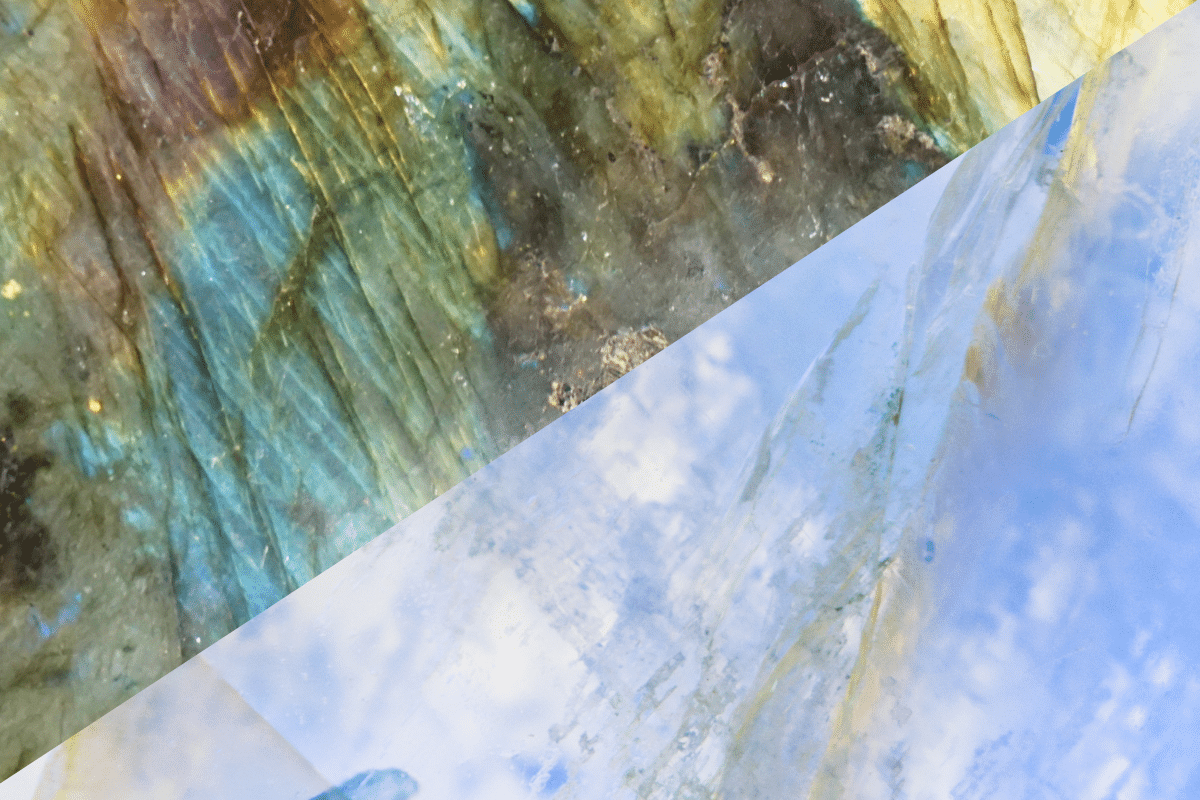
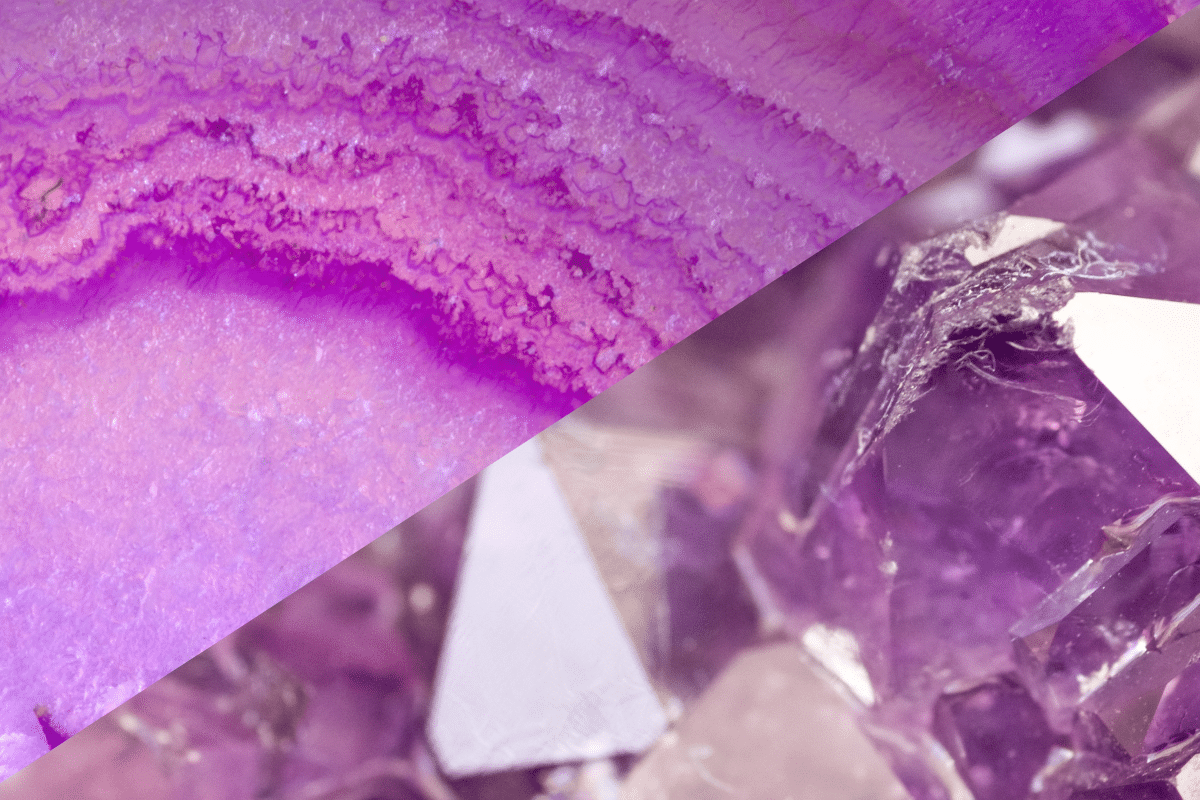
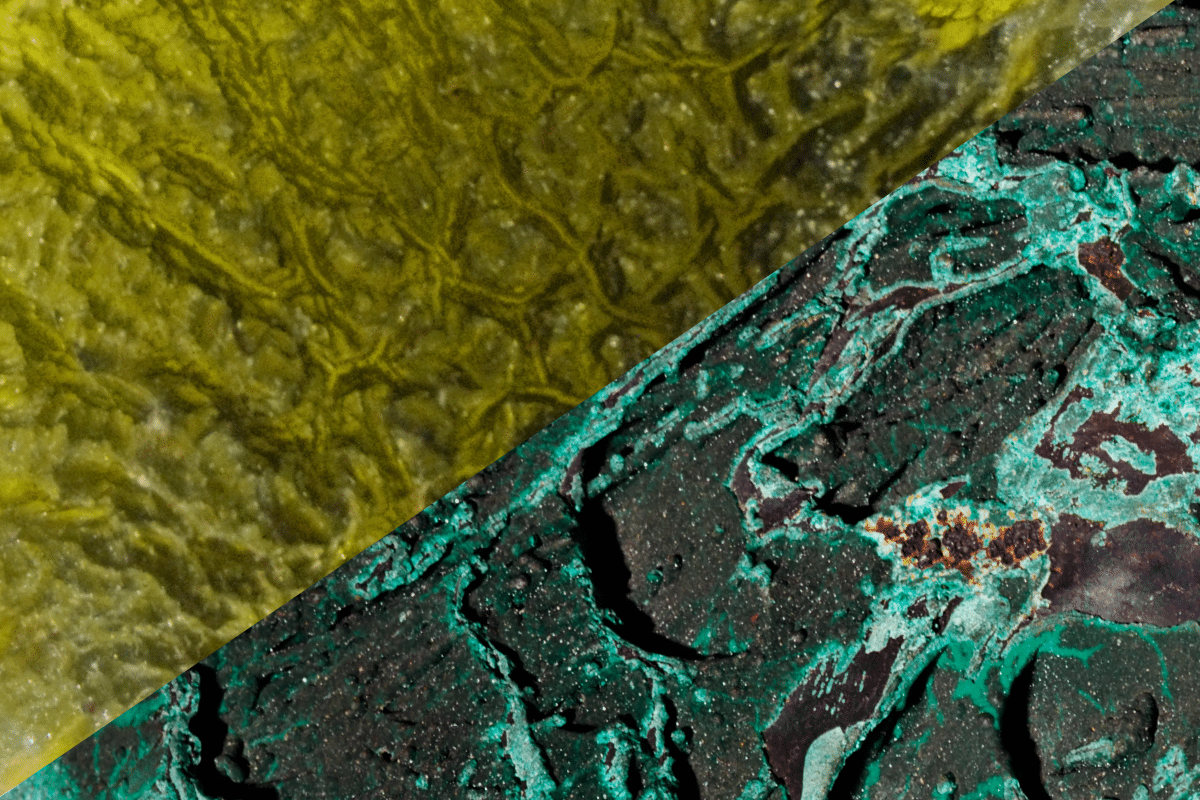
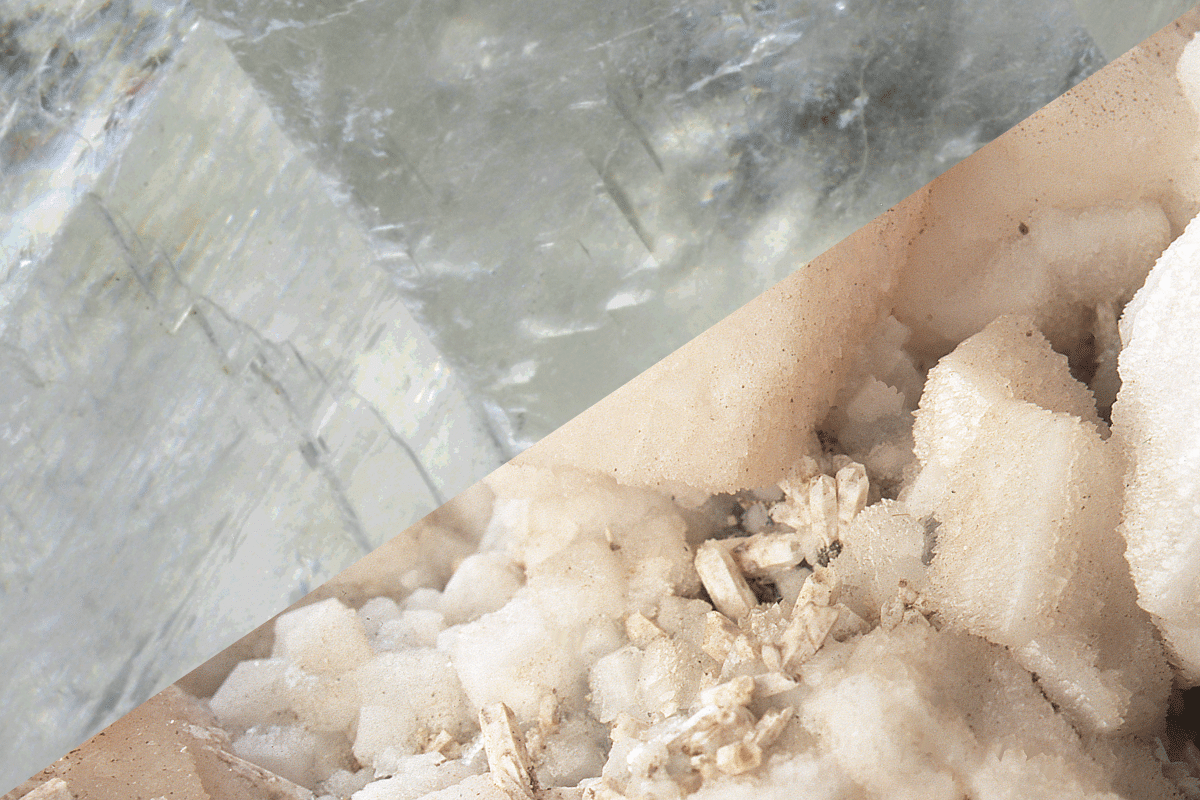
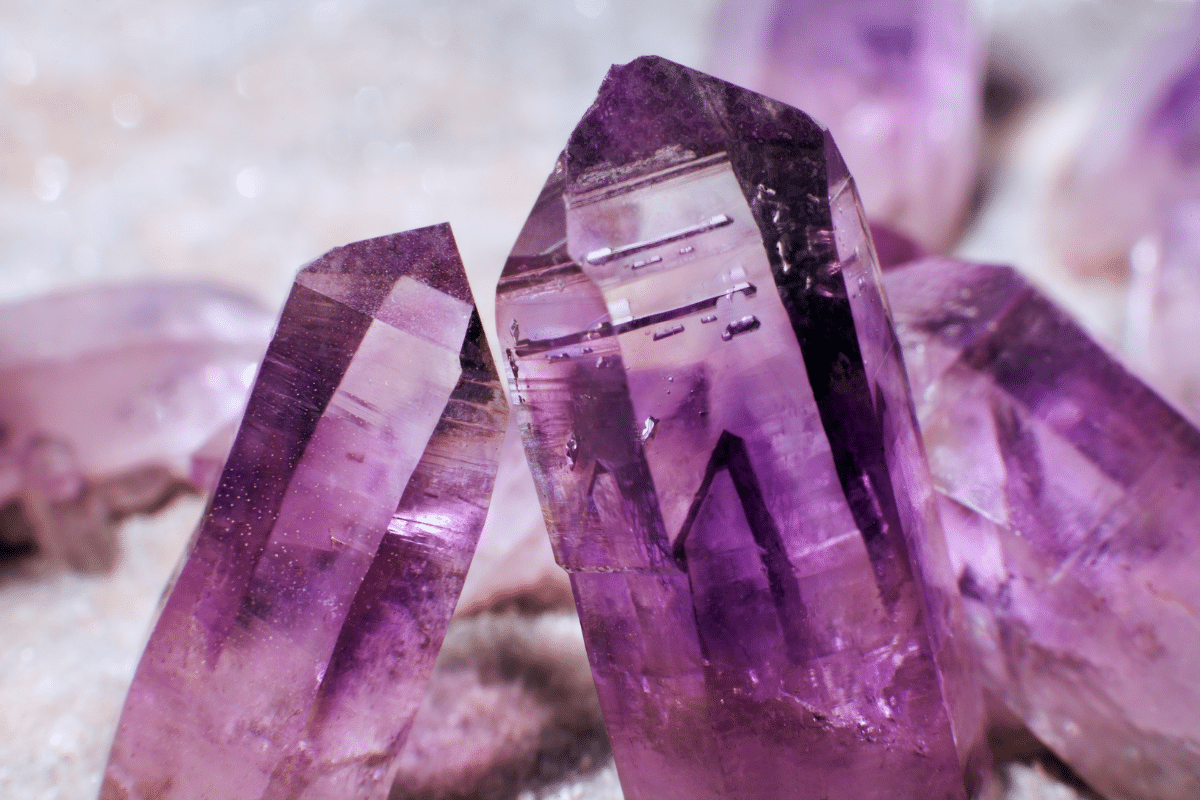
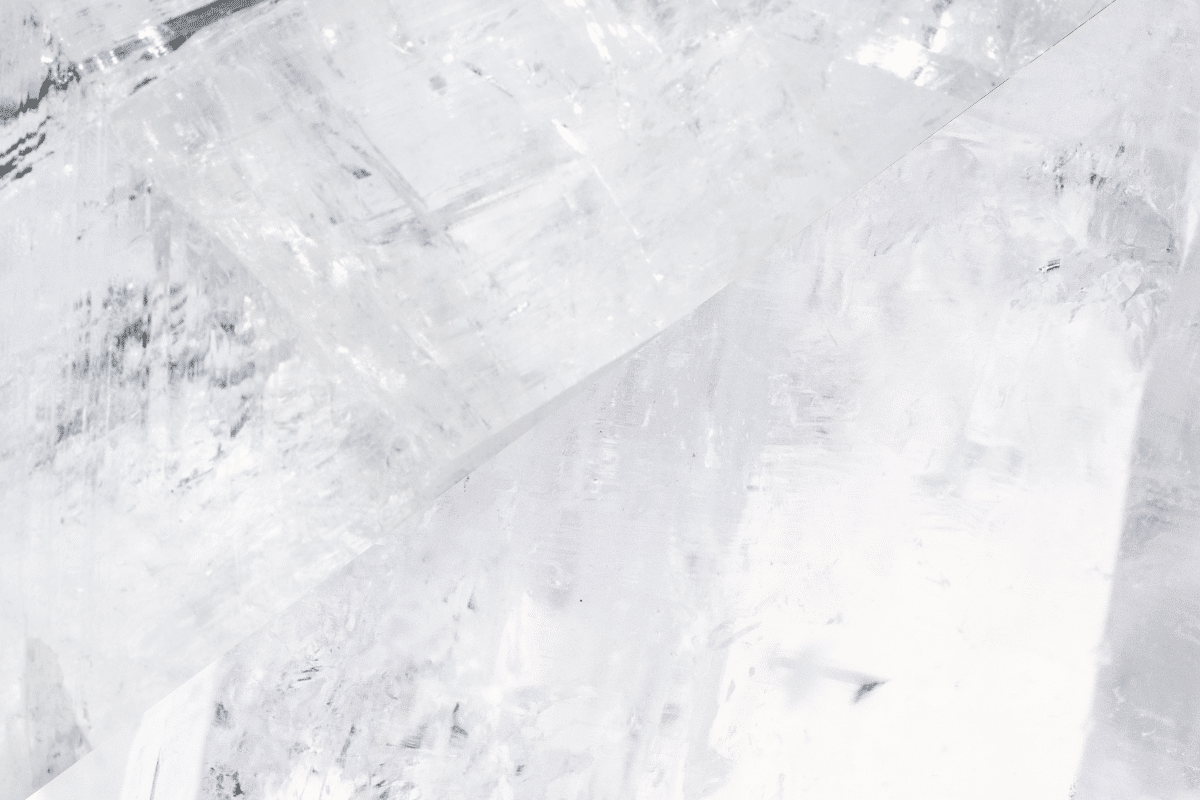
4 Comments